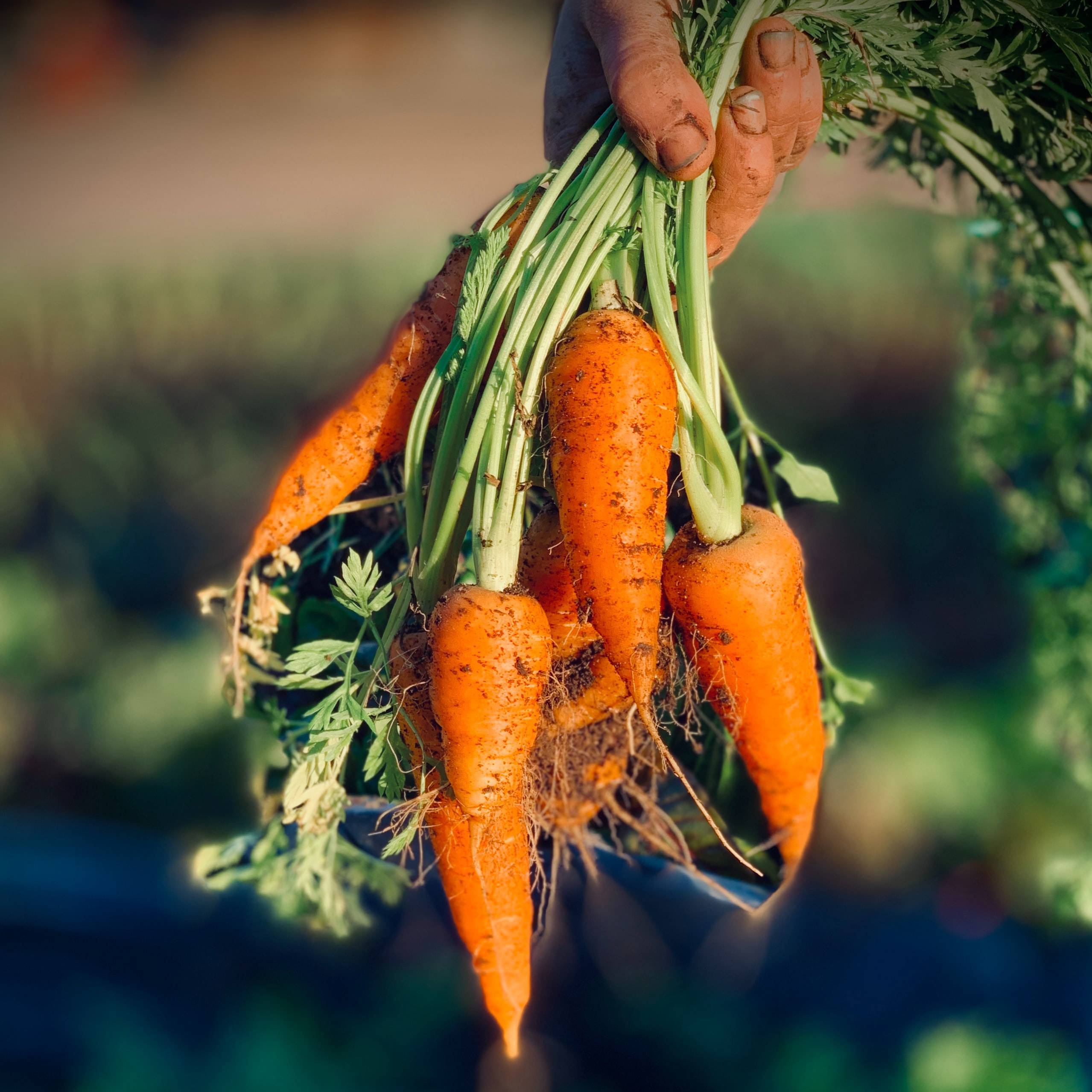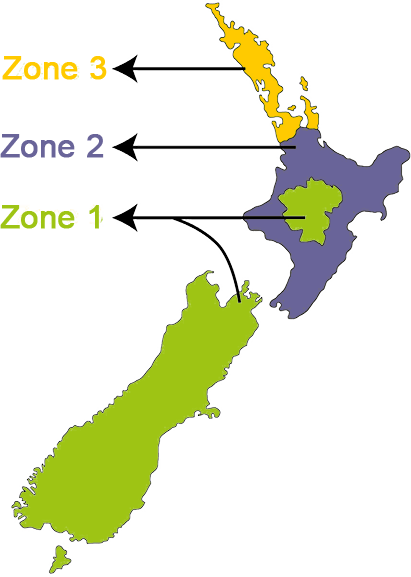
Growing Guide
Fun sun. Soft, loose soil.
6mm
5cm
5cm
30cm2
1cm
Directly sown
>35
112-140
Carrots need soft, loose soil to grow nice and straight.
Before sowing, dig around the soil well to break up any clumps and hard peices)Sow the carrot seeds 6mm deep (shallow from the top of the soil).
When seedlings are 5cm high, thin them to 2-3cm apart.
Growing in a pot could be a great space saving way (if you don't have a garden).
Just remember that the depth of your pot will define how long your carrots can grow! Ensure a sandy or heavy soil with good structure to allow roots to grow and expand.
When seedlings are 15cm high, thin again to 5cm apart.
(The ones you remove will have tender roots large enough to eat!)
Start pulling early to spread the harvest and allow remaining roots to grow larger.
Look for lovely orange crowns of your carrots poking up (and pull an exploratory one every now and again)
These root veggies are biennials so seed saving is a two year process.
Pick an open pollinated or heritage variety of carrot for best results.
Once the warm days of spring arrive, you will notice fresh growth sprouting from the tops of your carrots, and the flower stalk will develop in 4-6 weeks.
Carrot flowers look like those of their umbellifer relatives, dill, and caraway.
The green umbels will soon start to blossom into an umbrella-shaped cluster covered with tiny blooms, during which time they will attract droves of beneficial pollinators.
Later in the summer, you will see these umbels dry out and turn brown – and this is the time to harvest your seeds.
Once the seeds are clean, I like to place them in a sieve and rub them against the mesh to continue removing any remaining spikes, and filter out the smaller pieces of dust-like debris, so that it doesn’t go into my seed packets.
And try to pick the healthiest looking plants in order to preserve the strongest sets of genes – don’t bother saving seeds from any diseased or insect infested.
Clip off the dry umbels with pruners and place them in brown paper bags.
Do not pack them in too tightly as they need good ventilation to prevent mold from growing.
Place the bags in a dry spot in your home to allow the umbels to finish drying out.
Alternatively, you can spread the umbels out to dry in a single layer on a screen or other flat surface where they will have good ventilation.
You will know they are thoroughly dry when the plant material is brittle instead of pliable.
Once your flower umbels are dried out, it’s time to remove the seeds.
Separating the seeds from the umbel will allow you to store them in a smaller container, as well as removing chaff which takes up unnecessary space and could potentially harbor mold or diseases.
First, you want to remove the seeds from the umbel.
Get a bowl or plate, place one of the umbels over it, and rub them between your fingers to loosen the seeds from the flower head.
Pick out the seeds from the chaff (the dry seed casing).
After removing large pieces of chaff, then use your fingers to rub the spikes off the seeds.Once the seeds are clean, place them in a sieve and rub them against the mesh to continue removing any remaining spikes, and filter out the smaller pieces of dust-like debris, so that it doesn’t go into your seed packets.Label, place in airtight jar with silica gel packets or into envelopes.
Make sure your seeds are labelled!

Zone 1 - Cool
January , February , August , September , October , November , December
Zone 2 - Temperate
January , February , March , July , August , September , October , November , December
Zone 3 - Subtropical
February , March , April , May , June , July , August , September , October , November
Problems